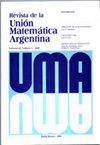从数据中学习模型
IF 0.6
4区 数学
Q3 MATHEMATICS
引用次数: 0
摘要
本文章由计算机程序翻译,如有差异,请以英文原文为准。
Learning the model from the data
. The task of approximating data with a concise model comprising only a few parameters is a key concern in many applications, particularly in signal processing. These models, typically subspaces belonging to a specific class, are carefully chosen based on the data at hand. In this survey, we review the latest research on data approximation using models with few parameters, with a specific emphasis on scenarios where the data is situated in finite-dimensional vector spaces, functional spaces such as L 2 ( R d ), and other general situations. We highlight the invariant properties of these subspace-based models that make them suitable for diverse applications, particularly in the field of image processing.
求助全文
通过发布文献求助,成功后即可免费获取论文全文。
去求助
来源期刊

Revista De La Union Matematica Argentina
MATHEMATICS, APPLIED-MATHEMATICS
CiteScore
0.70
自引率
0.00%
发文量
39
审稿时长
>12 weeks
期刊介绍:
Revista de la Unión Matemática Argentina is an open access journal, free of charge for both authors and readers. We publish original research articles in all areas of pure and applied mathematics.
 求助内容:
求助内容: 应助结果提醒方式:
应助结果提醒方式:


